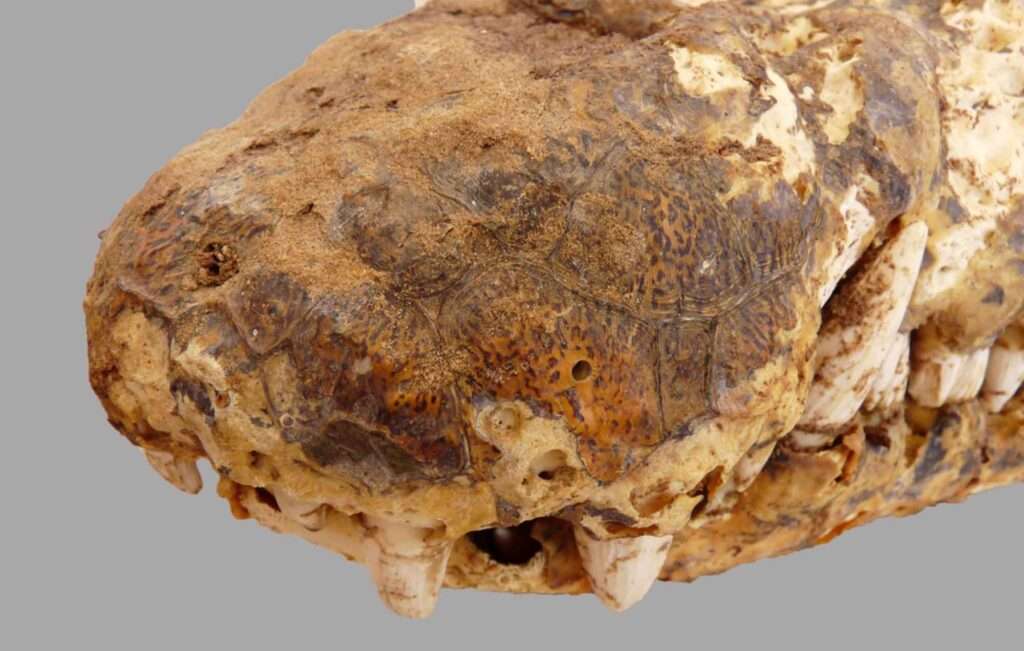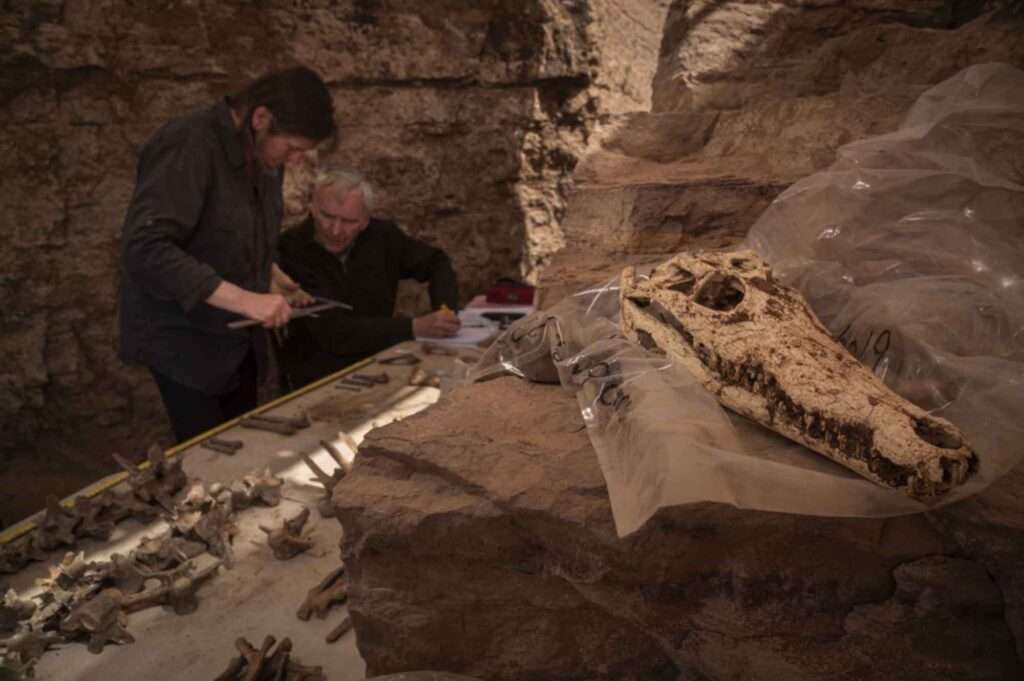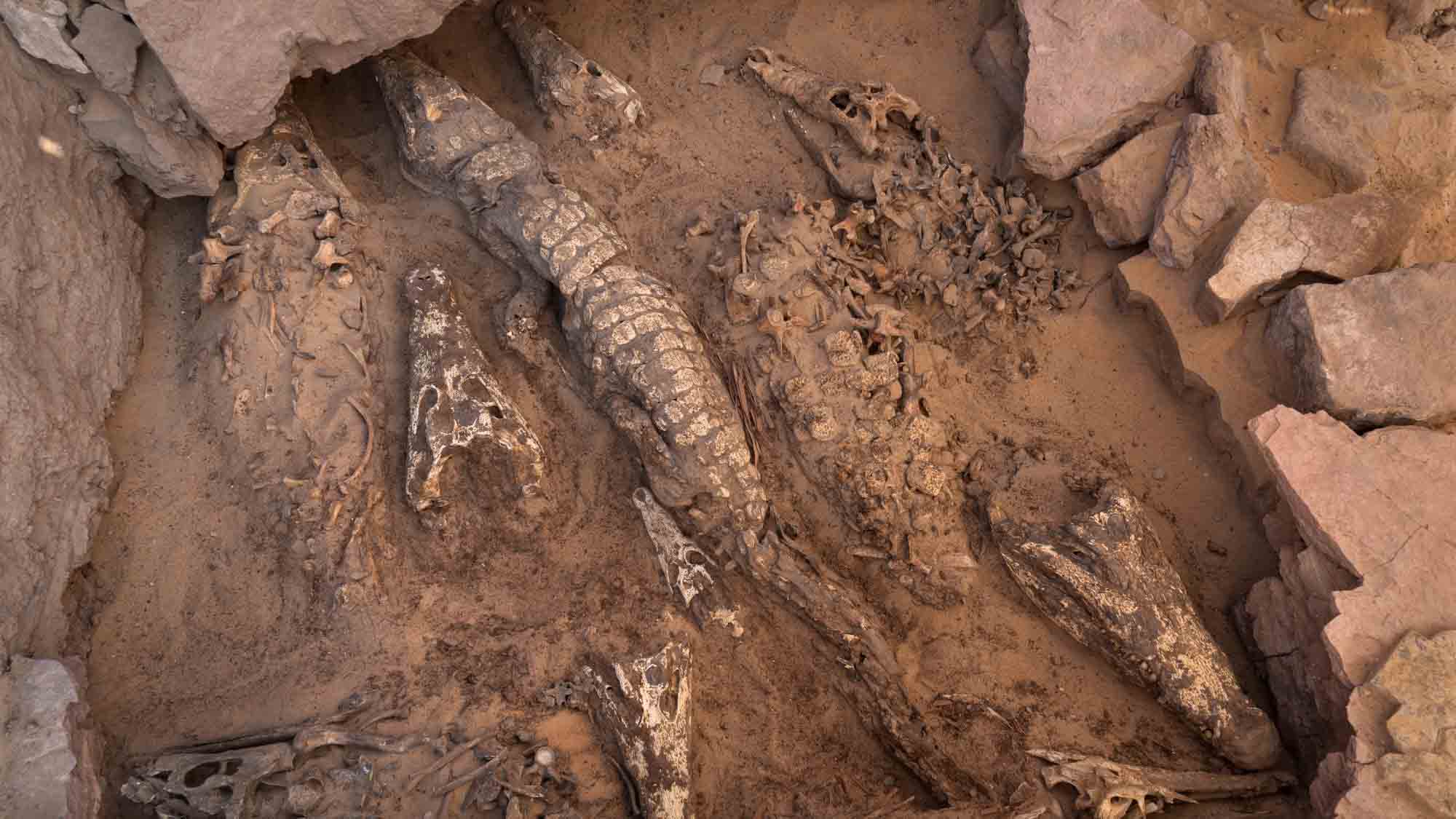A 2,500-year-old tomb with ten mummified crocodiles unearthed near the Nile was probably a tribute to an ancient Egyptian fertility god, experts have revealed.
Experts say the mummified reptiles were probably a tribute to the croc-headed deity Sobek, worshipped as the creator of the Nile.
The remains were found at Qubbat al-Hawa, on the west bank of the Nile River and have shed new light on ancient Egyptian mummification techniques.
A video released by the archaeological team shows the remarkably well-preserved crocs – some 11ft long – lying side by side.
Newsflash obtained a statement from the Royal Belgian Institute of Natural Sciences on 18th January saying: “Spanish archaeologists made an unusual discovery in southern Egypt: a still undisturbed tomb containing ten mummified crocodiles.
“Archaeologists from the Royal Belgian Institute of Natural Sciences were able to study the mummies.”
Archeozoologist Bea De Cupere, from the institute, described it as “an extraordinary find”.
The experts explained that ancient Egyptians often sacrificed crocodiles during rituals for Sobek.

Archaeologists from the University of Jaen first uncovered the tomb in 2019, as can be seen in the footage.
Qubbat al-Hawa is a site near the city of Aswan, in southern Egypt.
The statement added: “The small rock-cut tomb contained five skeletons and five skulls of large crocodiles.
“It lies next to six other tombs in which dignitaries of the region were buried. They all date from the pre-Ptolemaic era, before 304 BC.
“The crocodiles may have been used during rituals for the Egyptian god Sobek, the god of water and fertility, often depicted with a crocodile head.

“Kom Ombo, just 50 kilometres away, was an important centre for crocodile worship.”
De Cupere said: “More than 20 burial sites with crocodile mummies are known in Egypt, but to find 10 well-preserved crocodile mummies together in an undisturbed tomb is extraordinary,.”
She added: “Of most mummies collected by museums in the late 19th and early 20th centuries, often hatchlings, we don’t know exactly where they come from.”
The statement added: “The archaeologists at Qubbat al-Hawa found traces of linen, palm leaves and rope, associated with some of the crocodiles, indicating that they had once been wrapped.
“However, the linen bandages must have rotted away, and the crocodiles weren’t covered with large amounts of pitch or bitumen, which was common in more recent periods.

“A happy coincidence, as this allowed the researchers to measure and study these specimens thoroughly.”
The experts said that the smallest crocodile is 1.8 metres long and the largest is 3.5 metres.
The statement added: “They belong to two different species: the Nile crocodile and the West African crocodile. Remarkably, three skeletons were almost complete, with the other two missing quite a few parts.”
De Cupere said: “The crocodiles were first buried elsewhere, possibly in sand pits. This allowed the crocodiles to dry out naturally.

“Then the remains were unearthed, wrapped and moved to the tomb in Qubbat al-Hawa. Body parts must have been lost during wrapping and transport.”
She added: “I’m thrilled that finds like these give us another glimpse into the life of ancient Egyptians.”
The study has been published in the academic journal PLOS ONE.
To find out more about the author, editor or agency that supplied this story – please click below.
Story By: Joseph Golder, Sub-Editor: Marija Stojkoska, Agency: Newsflash
The Ananova page is created by and dedicated to professional, independent freelance journalists. It is a place for us to showcase our work. When our news is sold to our media partners, we will include the link here.




